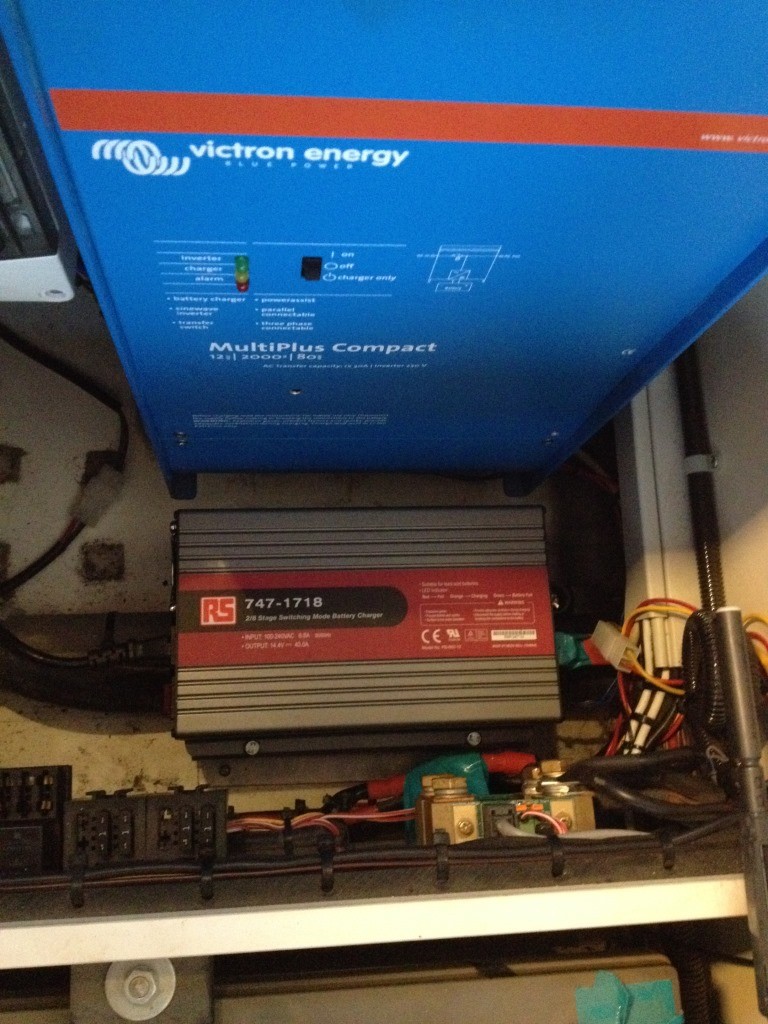Our existing Victron battery charger/inverter is generally pretty good, but one small ‘snaggette’ is that it cuts out if the supply voltage drops below 180V AC. This doesn’t happen in Europe, but in Africa with the ‘local’ wiring standards, there is often sufficient voltage drop to make the Victron battery charger/inverter drop out. This issue, plus our long term plans to include the USA in our travels (with its 110V AC power supply), has convinced us to install an additional, multi-voltage battery charger.
Integrating the multi-voltage battery charger
The Mean Well PB-600 multi-voltage battery charger we have installed (RS Components Part No. 747-1718) has an input voltage range of 90 to 264V AC at 47 to 63 Hz. This will allow it to be used on USA voltages and at sites where the voltage drop is well below the limits acceptable for the Victron battery charger/inverter. The PB-600 has a charging current of up to 40 Amps and can be used as a power supply for 12V DC systems. This means that we can charge the batteries and power the vehicle systems from the charger, thus keeping the leisure battery at full charge.
The PB-600 multi-voltage battery charger has a remote switch option and our Victron battery charger/inverter has a configurable control relay. I have configured this relay so that when the Victron battery charger/inverter is charging the battery, the PB-600 is turned off; that way there is no danger of both chargers operating simultaneously.
When we have a power supply below the Victron battery charger/ inverter input requirements, we can use its inverter to provide all of the 230V AC that we require. It is even powerful enough to run the electric water boiler and heating! This would of course put a large drain on the leisure battery. But with the PB-600 multi-voltage battery charger operating on the lower supply voltage, it can supply 40 Amps which greatly reduces the strain on the leisure battery, if not removing it completely. It is worth remembering that the boiler may pull 130 Amps but this will only be for about 30 mins (65 Ah). With the charger running, that is reduced to 90 Amps from the battery (45 Ah). As the charger will keep running it will replace this 45 Ah over the next hour or so.

